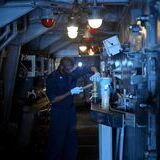OEE: What it is and how to implement it in your production lines
OEE (Overall Equipment Performance) is the most widely used indicator to measure productivity in a manufacturing center. The manufacturing cost of a product is a very important component of the final cost, so with a correct measurement and interpretation of OEE, actions can be taken to optimize productivity and therefore cost.
Let's go with a bit of history; OEE was created by the Japanese engineer Seiichi Nakajima during the 60's after observing that the three most important variables in production that represent the overall performance of a line or equipment were the availability of a process to produce, the performance of that process and the quality level of that production obtained. The relationship between these three variables is OEE.
What is availability in the OEE?
Availability is the comparison of the time we have programmed to produce, with respect to the time actually produced. It will be expressed as a percentage as follows:
%Availability = (Time Producing/Time Scheduled to produce) x 100
Some examples that affect availability would be stoppages due to breakdowns, lack of raw material/components or change of reference. Each stoppage must always be well described and categorized in order to have concrete data.
Let's see this with an example. Let's assume a manufacturing line with three operators operating three machines (three workstations). In this manufacturing plant, production takes place in three shifts, five days a week, i.e. a total of fifteen shifts. Two references with the same ideal cycle time can be produced on the line. The way of working defined in the line is as follows:
- In each shift, there are four 10-minute breaks, to avoid operator fatigue.
- Let's assume that the ideal cycle time is 30 pieces/hour.
If we focus on a given shift on a given day, we take the production data from there:
- Total parts produced: 180
- Total OK parts produced: 165
- Total NOK parts produced: 15
- Stoppages due to change of reference: 20 minutes
- Stoppages due to breakdown: 15 minutes
Taking all these data into account, let's proceed to calculate the availability.
The first thing we need to know is the Scheduled Time to Produce. In our case, we are going to calculate it in minutes and it will be as follows:
Scheduled Time to Produce = 8 hours x 60 minutes/hour - 10 minutes/break x 4 breaks = 440 minutes.
The actual production time will be less due to stoppages for reference change and breakdown:
Production Time = Scheduled Time to Produce - Stoppages = 440 minutes - 20 minutes (reference change stoppage) - 15 minutes (breakdown stoppage) = 405 minutes
We already have the two data so the percentage of availability will be:
%Availability = (405 minutes /440 minutes) x 100 = 92%.
What is OEE performance?
The OEE performance informs us of the measure of performance loss. That is, it is a ratio that expresses the comparison between the ideal cycle time and the actual cycle time. These losses can be due to:
- Going slower than the line can actually run
- Micro stoppages due to wear of the machine with fast maintenance action (if it is a long breakdown it has to be categorized as availability).
- Micro stoppages due to material feeding errors
- Micro stoppages due to material queues or material jams in process
The OEE performance shall be expressed as a percentage as follows:
%Performance= (Actual Production Quantity/Theoretical Production Quantity) x 100
If we take our example we already have the Actual Production Quantity, which is 180 parts produced.
Now we have to calculate the theoretical production we should have achieved taking into account our actual availability, i.e. 405 minutes.
Theoretical production = 30 pieces/hour x (1 hour/60 minutes) x 405 minutes = 30 x 405 / 60 = 202.5 parts
We now have the two data needed to calculate the performance:
%Performance= (180/202,5) x 100 = 89%.
What is OEE quality?
The OEE quality takes into account the manufactured parts that do not meet the defined quality standards. Good parts will be considered as those that pass through the manufacturing process with an OK result the first time. All those that need to be reworked will be included as NOK parts, except for exceptions that will be discussed in a later point.
Thus, the quality indicator in percentage will be expressed as follows:
%Quality = (Quantity of OK parts produced/Quantity of parts produced) x 100
For our example we already have the two data, so that:
%Quality = (165 parts/180 parts) x 100 = 92%.
How is OEE calculated?
OEE, as we have indicated at the beginning, relates the three most important variables that influence production, availability, yield and quality. The formula would be as follows:
%OEE = %Availability x %Performance x %Quality.
So for our example, we would have that the OEE for the shift from which we have taken the production data would be as follows:
%OEE = 92% x 89% x 92% x 92% = 75%.









